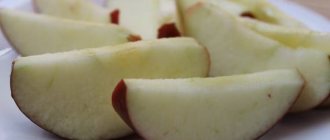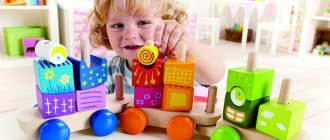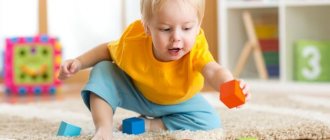For most babies, the last months of the first year of life are marked by two important events: the first words and the first independent steps. In addition, the development of a child at 11 months is characterized by new psychological and physiological indicators. Toddlers also actively express their own feelings and emotions, and can also show future temperament in certain situations.
The level of motor activity in children at this age is individual. Some babies at 11 months are still actively crawling, while others are taking their first confident steps. As they move, children explore the space around them. A baby can examine an object of interest from different angles, and also carry out all sorts of manipulations with it in order to determine its basic properties: throw it on the floor, knock, bite, lick, etc. He takes out a toy that is interesting to him, using different movements.
At 11 months, babies’ fingers become more dexterous and obedient. The child, using his thumb and index finger, perfectly assembles small parts, and also takes great pleasure in tearing sheets of paper into small pieces. The kid also tries to independently build a tower from two cubes, which he immediately destroys.
At 11 months, the child has a complete understanding of the semantic load of words. The baby fulfills simple requests from adults and responds to his name. The child also learns the meaning of gestures and repeats them as needed. For example, “give-give”, “well-well-well”, “bye-bye”, etc. At this age, children respond well to the intonation of spoken words. They clearly recognize words of praise and criticism addressed to themselves. Children at 11 months understand the meaning of prepositions: from, in, for. Kids actively imitate all the actions of adults and love active and noisy games.
It is important at this age to organize joint games with your child, in which some simple plot is played out: feed your favorite bear together or put him to bed. Parents must comment and explain the entire sequence of actions to the child.
An eleven-month-old baby's active vocabulary is still small, but he understands the meaning of many phrases very well. Encourage your baby to express his own desires not with gestures or shouting, but with words. Constantly communicate with the baby, read short poems and first fairy tales with him. Thus, you will not only expand his vocabulary, but establish a strong emotional connection with your baby, which will help him actively develop.
In order for a child to be cheerful and active during the day, it is necessary to follow the correct daily routine. Pediatricians recommend maintaining two naps during the day and five feedings at this age. Depending on the temperament and individual characteristics of the baby, these numbers may vary. For example, if your baby falls asleep early in the evening and sleeps peacefully until the morning, then you can refuse night feeding.
The body weight of an eleven-month-old baby already fluctuates between 9.6-10.2 kg, and the growth rate is 72-75 cm. It should be noted that the physical development of a child depends on his individual characteristics, gender, activity and balanced diet. At this age, the milk bite is also formed, allowing the baby to expand the range of his taste sensations.
What can a child do by the end of 11 months of life?
Caring parents often ask the question: what can a child do by the end of the 11th month of life and whether their baby is developing correctly. There are standard indicators of the physical, intellectual, and emotional development of an eleven-month-old baby. But don’t worry if your baby doesn’t yet know how to perform some actions. After all, the development of each child is individual!
Main indicators of the child’s physical development by the end of the 11th month:
- knows how to actively move on all fours;
- tries to go independently in a certain direction;
- knows how to walk sideways, maintaining balance with the help of furniture, a playpen or other available means;
- goes forward to adults when both hands are offered to him;
- fits well;
- gradually gets used to effective pottying;
- can chew solid food;
- tries to independently manipulate the spoon while eating.
An eleven-month-old baby is characterized by high cognitive activity. The baby can easily perform the following actions:
- carries out various manipulations with objects (throws a ball, folds pyramids, rolls a stroller);
- likes to put toys in containers and boxes;
- deliberately discards toys;
- points with his hand to objects that interest him;
- shows interest in the people, phenomena and objects around him;
- imitates mother's actions;
- opens his palm in accordance with the object he wants to take;
- imitates animal voices with pleasure: woof-woof, oink-oink, etc.
At this age, the baby’s speech centers are actively developing and their vocabulary is enriched.
The child enjoys doing the following:
- pronounces 5-10 meaningful words;
- can communicate in the form of babbling monologue, which is similar to small sentences;
- clearly understands the meaning of the words “no” and “cannot”;
- reacts actively with his voice to the sound of melodies;
- at the request of parents, brings toys and objects;
- imitates various sounds.
The baby at the age of eleven months requires the attention of adults and loves to play with them. During play activities, the baby develops more actively, learning new information for him.
If parents offer their child to master the basics of fine art, then at 11 months he will be able to:
- perceive primary colors;
- draw with interest on paper with your fingers, creating the first masterpieces of fine art;
- will quickly learn to determine the shape, texture and color of objects.
Toddlers also love to listen to fun music and respond with dance moves, singing together, or facial expressions.
At the age of 11 months, the child prefers to listen to short, funny rhymes and fairy tales. He willingly looks at the illustrations for them and can show the main characters at the request of an adult. Kids love it when adults read a fairy tale with different intonations and accompany it with theatrical actions.
Educational activities and games for an 11-month-old baby
To develop basic concepts in your baby: shape, color and size, you will need various pyramids, Montessori frames and inserts, cubes of different sizes, boxes with holes. Classes with this didactic material develop the child’s fine motor skills and form the concepts of small-large, one-many. The baby learns to group objects according to a given color or size, and also acquires the skills of making pyramids according to the proposed pattern. The necessary material can be purchased at children's goods stores, or you can also make it yourself. For example, a bright box with various holes into which the baby will drop various objects of different shapes and sizes. The baby especially enjoys the process of overturning the miracle box and independently removing various objects from it.
The following educational activities and games are recommended for an 11-month-old child:
First construction.
For this game, you can prepare empty cups from plastic material or glue bright cubes from cardboard bags. Invite your child to play “construction site”. Praise your baby when he manages to place one cube on top of another. This game develops fine motor skills, coordination of movements and the ability to concentrate.
We determine the properties of objects.
This educational game shapes the baby's speech and develops his sensory skills. For the game, prepare objects that differ in texture, color and size. For example, a hard cube and a soft elephant. Place your baby's hand on a hard cube and say with a firm intonation: “This is a hard cube.” Next, repeat the properties of this item several more times and move on to the soft toy. Also pronounce the word soft elephant with soft intonation. Thus, the baby will learn to distinguish soft and hard objects from each other.
Where is he?
To play, take your baby's favorite toy, such as a ball, and hide it. Your baby should watch your actions. And then recite to him:
Where is our ball?
Where is he?
Let's find him quickly!
Go with your baby to the place where the ball is hidden and pull it out along with the glory: “Hurray, we found our ball!”
Next, hide other toys, while changing the word “ball” to the name of other objects. When the baby masters the sequence of actions in this game, he will be able to independently search for various objects. This game will help your child develop memory and spatial orientation.
Game Mitten.
As a basis for the game, you can take the famous fairy tale of the same name and prepare toys that are found in the plot of this work: a mouse, a frog, a hare, a fox, a bear. Next, put the toys into a clothes bag, which will serve as an image of a mitten, and ask: “Who lives in a mitten? Show yourself to us! Take the bunny out of the bag and talk with your baby about the name of this animal, what its voice is and what it can do. So, one by one, you need to play with all the toys in the bag.
The game “Mitten” instills in the child communication skills, develops speech, memory and attention.
Game Free artist.
For this game you need to prepare a large sheet of whatman paper or a piece of old wallpaper. Spread the paper on the floor or tape it to a vertical surface at the child's level. Take safe paints of various colors and brushes. Draw colorful lines, ovals, circles and other shapes on paper for your child. The main task is to interest the baby in his own actions. If your child shows a desire to create his own masterpiece, then help him draw the first picture using his fingers or palms.
This game perfectly develops creativity, fine motor skills, and teaches you to concentrate on an object.
Game Give me a toy.
Prepare two toys and place them on two chairs. For example, a car and a bear. Ask your child to show where the bear is and how he talks. After this, tell the baby: “Give me the bear!” When your baby brings a toy, be sure to praise him for it.
Parents can play various games with their baby at 11 months. In this case, the plot of the game is provided by teaching methodologists or thought out independently by parents. It is important that during the lessons the baby feels great and is ready for new discoveries!
Practical adviceTraveling by car:
The child likes to ride in the car, but now he no longer falls asleep immediately as before. Hang large beads or hair curlers above the seat to keep your baby entertained while traveling.
Take your child shopping:
When going grocery shopping, take your baby with you. Usually such walks have a good effect on children. Tell your child what he sees and let him put a few small objects into the basket. Remember that by giving your child something to eat during a walk, you can gradually develop a habit that will be difficult to break.
New friends:
Although your baby still keeps an eye on you, he enjoys making new adult friends. A child will get used to a stranger faster if he gives him a toy.
Going to a restaurant:
Parents, just like children, enjoy eating out occasionally. Unfortunately, at this age, a child cannot always eat what is served to adults. You can take a children's folding chair with you to the restaurant and seat your child at a common table. Don't forget to bring a bag with toys and food for your baby.
Games with other children:
Your child strives to communicate with other children. If he has older brothers and sisters or neighbors their age, he watches their games with interest and tries to attract attention. Children behave differently with peers their age. At first the children will play separately, then after a while they will get to know each other. Soon they will begin to look each other in the face and even exchange toys.
Game time
Feed the doll:
Place a toy animal on your hand. Give your baby a ball and ask him to feed the toy. Once you show your child how to do it, he will understand what you are talking about.
Daughters and mothers:
Give your child a comb and a doll. See if he will comb her hair.
Humor:
An eleven-month-old child has a developed sense of humor. He starts having fun and laughing if he notices something funny. Pretend you want to drink from his horn or put on his shoes. Do you see how your baby laughs?
Outside the window:
If you hear a plane flying or a bird singing, bring your child to the window and tell him about what you can see there.
New discoveries
Sense of rhythm:
Show your child how to beat out a rhythm with a wooden spoon on an upside-down pan or cake tin.
Through the tunnel:
Let the toy car drive through the cardboard tube. The child will eagerly wait for her to appear at the other end of the tunnel.
Place the doll on your hand:
Give your baby a doll in his hand and let him make it move.
Toy with ribbon:
Tie colorful ribbons to two of your child's favorite toys, such as a car and a teddy bear. Place them at some distance from the baby so that he can reach them only by pulling the ribbon. Ask him to give you the bear first and then the car. Soon he will learn to get the right toy. Try playing by hiding first one and then both toys, so that only the ribbons are visible to the baby.
Wind-up toy:
The child learns to play with toys that can be controlled. Give him a machine with a lever on top. Using this lever, the baby can regulate its movement.
Development of coordination
"Balance beam":
Place a well-sanded board (or ironing board) on the floor, at least 15 centimeters wide and 120 centimeters long. Let the baby be on one edge of the board, and on the other you put a toy. With your help, he should reach the toy and take it. If the board lies on a slope, the game will be even more interesting.
Adhesive paper:
Place adhesive paper on the floor, sticky side up. Attach it to the floor along the edges so that it does not slip. Let the baby walk across the paper. Place several light toys on it: the child will happily pick them off. This exercise gives a good workout to the baby's arms and legs. Try to finish the game before he gets tired of it.
Help your child go down the stairs:
If your baby has learned to climb up stairs, show him how to go down on his stomach or on his feet. (It is better to show your child a safe way to go down the stairs than to expect the stairs to be closed all the time.)
Chair instead of walker:
If your baby begins to walk, show him how to hold onto a small, lightweight chair and move it around the room.
Let the baby push the stroller:
If your child is just learning to walk, give him a small stroller to push. This is a useful exercise with which the child learns to maintain balance and stop in time. (To make a lightweight stroller more stable, place a heavy book in it.)
Barefoot on the floor:
Whether your child walks on his own or holds your hand, he will love the feel of different surfaces under his feet. Let him walk barefoot on the carpet and on the smooth floor, on sand and grass.
Making decisions
Cookies in a box:
Place the cracker pieces in a small film container or plastic jar. Lightly cover the jar with a lid, and then show your child how to remove it and get out the cookies.
Ball game:
Push the ball so that it rolls towards the child and have the child return it to you. Sing a song and play ball, trying to keep the rhythm.
Wrap the toys:
Wrap the toys in foil or paper towel and let your child unwrap them. Do not tie them with string or ribbon.
Cold items:
When you return from the store and put the groceries in the refrigerator, leave a few purchases so that your child can put them away himself. Talk to him about how cold they are and let him touch them. Let your child help you put them in the refrigerator.
Sew a bag for your child:
Sew a flannel backpack for your baby so he can put it on his shoulders. Place toys inside and let your child take them out.
How to put on shoes:
Give your child your shoes and show them how to put them on.
Pets:
If you are going to get a pet, it is best to do it now, while the baby is not yet strong enough to accidentally offend his pet. By the time the child grows up, the pet will already get used to it and will be able to protect itself in case of danger. Your child will surely get great pleasure from playing with his four-legged friend.
Seated toys:
Give your child a toy animal to sit on. Place the toy on its side and see if your child can return it to a sitting position.
Daily routine
Feeding time
Bulk products:
It is very convenient to pour small breakfast cereals from one plastic cup to another. This makes it much more difficult to get dirty than pouring water. Pour small pieces into a cup and show your child how to pour them from one container to another. If a few crackers spill on the table, the baby will be happy to try them.
Flour pattern:
If you use flour instead of a pencil, you will get magical drawings. Spread the flour in a thin layer on a clean, smooth surface. Drag your finger over the flour to show how you can draw circles, zigzags and straight lines.
Crackers:
Let your child spread sweet jelly or jam on the cookies, or have them decorate a buttered cracker with pieces of breakfast cereal. By preparing food for himself, the baby feels a sense of responsibility.
Self-service:
When you serve your child mashed potatoes, corn or other vegetables, let him put some on his plate - you might be surprised at what he wants to try.
Cup and spoon:
A cup and a tablespoon will help your baby learn to pour liquid. Show him how to place a spoon in a bowl of water and fill the cup. This endless game can be played without fear of getting dirty. For added interest, add ice cubes to the water.
Bath time
Duck soup:
By playing with water, a child gains enormous experience. Using various vessels, the baby gets acquainted with the concept of space and volume. Give him a ladle, a sieve and put a few toy ducklings in the bath. You can join your child and catch some duckling. This activity helps the baby develop hand coordination and eye control.
Clean bath:
Give your baby a sponge to clean the bath. He'll love drawing along the sides of the mug and drawing lines up and down.
Scoop and catch:
Give your child a sieve and a few small toys. He will use a sieve to scoop up toys and remove them from the water. This game helps develop coordination of movements.
Toothbrush:
Give your child a toothbrush and see if he starts brushing his teeth.
Changing clothes
Sticker game:
Changing your baby is always difficult, but you can make it easier by letting him decorate his diapers with stickers. He will be happy to attach them to new clothes, and in the meantime you can easily change his clothes.
Clothes for the bear:
Sew a small vest for a teddy bear. Decorate it with stripes. Let the child dress up as a bear. This will keep him entertained while changing clothes.
Adhesive tape:
When your baby is particularly fussy while changing clothes, try giving him a piece of duct tape. Sometimes this helps distract the child. He will stick the tape on and off while you change his clothes.
Time relax
Pictures that can squeak:
Make a book for your baby with pictures that can squeak. While you turn the pages, the child will play. (You can buy special toys for this purpose from stores that sell the latest new products. You can glue or sew them under pieces of fabric in your homemade book.)
Clothing with a zipper:
Dress your doll or bear in a suit with a zipper. Show your child how the zipper moves up and down and how it opens and closes. Let your child gradually learn to master some of the necessary skills.
Glove game:
Playing with large gloves will force the baby to solve a huge number of problems. After many attempts, he learns how to put the glove on his hand. He can continue playing by putting the glove on his foot.
Song in the car:
Singing songs you know well is a great activity to do while driving. If your baby refuses to sit in the seat and is naughty, sing him some simple song and you will see how quickly he will calm down.
Up...
Marilyn Segal "A child plays from birth to one year"











